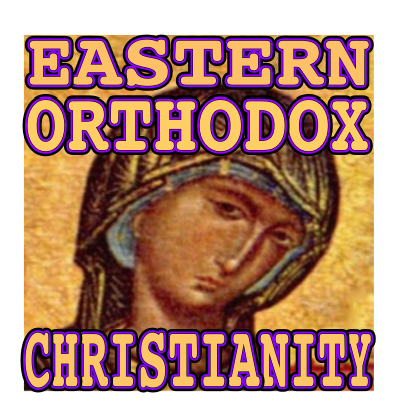What does it mean to be part of the Orthodox Church? It is a question that beckons both inquiry and introspection. Exploring the origins and growth of Eastern Christianity reveals a rich tapestry woven from history, theology, and cultural evolution. However, the advent of the Orthodox Church—and the traditions that accompany it—poses a playful challenge in understanding its distinctiveness and ramifications in the broader Christian context.
To comprehend the Orthodox Church’s origins, one must traverse back to the roots of Christianity itself. It was in the early centuries of the Common Era that Jesus’ teachings germinated into a faith that would eventually proliferate through diverse geographical landscapes. Initially, the burgeoning Christian community was a mosaic of varied beliefs and practices, a far cry from the cohesive bodies of faith we recognize today. The socio-political milieu of the Roman Empire was instrumental—its extensive roads and relative peace facilitated communication and conversion across vast territories.
As the apostles spread the Gospel, the seeds of Eastern Orthodoxy were planted. Notably, figures such as St. Peter and St. Paul were pivotal in the dissemination of these Christian teachings, particularly within regions such as Asia Minor and the Eastern Mediterranean. The passion of these early missionaries cannot be understated; their dedication to the faith led to the establishment of various ecclesiastical structures. However, could it be argued that the lack of a singular governing body set the stage for the multifaceted nature of what was to come?
The term “Orthodox” itself implies a strict adherence to established traditions and beliefs. Derived from the Greek words “orthos” and “doxa,” meaning “correct” and “opinion” or “glory,” respectively, it embodies the essence of maintaining doctrinal purity. The categorization of Christians into “orthodox” and “heterodox” became especially pronounced after the first Council of Nicaea in 325 AD. This ecumenical gathering sought to address heresies and standardize doctrine, illustrating an early effort towards unity and adherence. Yet, did this quest for uniformity inadvertently sow the seeds of division as well?
As the centuries progressed, the Eastern Church experienced both spiritual and temporal growth. The establishment of the Byzantine Empire in the fourth century provided a strong foundation for the Orthodox faith to flourish. Byzantine Emperor Constantine the Great, recognizing the burgeoning influence of Christianity, famously declared it the state religion of his empire. This strategic move not only elevated the Church’s status but catalyzed its role as a significant socio-political entity. Byzantine Christianity, underpinned by the synthesis of Greek philosophy and Roman governance, would soon burgeon into a cultural powerhouse.
The role of monasteries became paramount during this era as they emerged as bastions of theological reflection, education, and missionary work. Figures like St. Basil and St. John Chrysostom fostered monastic communities that became integral in disseminating the faith and nurturing spiritual life. Do these sanctified institutions serve as a testament to the Church’s resilience and adaptability in the face of sociopolitical upheaval?
As the ecclesiastical hierarchy developed, a distinction emerged between Eastern and Western Christianity, primarily evolving from their differing theological emphases and ecclesiastical governance structures. In the East, the patriarchates of Constantinople, Alexandria, Antioch, and Jerusalem guided the faithful, symbolizing both unity and diversity. The pivotal rift in 1054 AD, known as the Great Schism, further delineated the division between Roman Catholicism and Eastern Orthodoxy. This fissure remains one of the most significant events in Christian history, underscoring the role of political power, cultural differences, and theological disputes.
Intimately intertwined with its history is the Orthodox Church’s approach to worship and spirituality. The liturgical tradition is steeped in ancient rites and practices, maintaining a continuity that dates back to the early Church. The Divine Liturgy—a central worship service—exemplifies this adherence to tradition, incorporating the use of rich symbolism and sacramental elements that elevate the experience beyond mere ritual. Are the sensory experiences embedded in these sacred rites not a reflection of the deep theological convictions of the Church?
In the context of contemporary society, the Orthodox Church wrestles with the challenge of modernity while striving to uphold its ancient traditions. The intensifying dialogue between Eastern and Western Christianity continues to prompt discussions regarding ecumenism and the possibility of unity amidst diversity. The experience of Orthodox believers today varies widely across cultures and geographic boundaries, yet they all share a common spiritual heritage that transcends time and place.
In examining the growth of Eastern Christianity, one cannot overlook its diaspora. The waves of migration have dispersed Orthodox believers beyond the traditional strongholds of Eastern Europe and the Middle East, leading to the establishment of parishes around the globe. This global presence invites both opportunities for engagement and challenges in maintaining a cohesive identity.
What, then, lies ahead for the Orthodox Church? As the world changes, so too will the expression of its faith. The necessity for the Church to articulate its beliefs in an increasingly pluralistic society is a delicate balancing act—one that requires both reflection on its rich heritage and adaptive innovation. The question remains: can the Orthodox Church foster an inviting space that embraces dialogue without compromising its cherished traditions? Ultimately, the journey of understanding the Orthodox Church is reflective of the larger Christian narrative—one that seeks not just to preserve the past but to engage meaningfully with the present and future.



